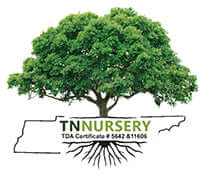
Blossoms on the Plate
Share
Edible Flowers: A Culinary Journey Through Blooms and Petals
For centuries, culinary enthusiasts have been enchanted by edible flowers, which bring visual beauty and distinct flavors to creative dishes. The tradition of incorporating blossoms into cooking has ancient origins, and various cultures around the globe have long appreciated their distinctive flavors and beneficial qualities. Edible Flowers continues to provide an exciting experimental platform that brings colorful creativity into restaurants, home kitchens, and local bake shops. Edible flowers appeal visually to salads, garnishes, beverages, and desserts while contributing distinctive tastes, from pansies' gentle sweetness to nasturtiums' sharp, peppery flavor. Studying edible flowers as part of culinary arts demands knowledge and a willingness to explore unknown territories. Studying edible blooms reveals their historical roots while showing the best cultivation methods, revealing a world where gardening meets culinary arts and artistic expression.
Tracing the History of Edible Blooms
Ancient texts and archaeological findings reveal that people from different civilizations have used flowers in their food throughout history. Ancient Chinese cuisine incorporated chrysanthemum petals into teas and broths to produce delicate floral flavors, while Romans used violets and roses as table and edible decorations. During that same era, people in the Middle East created sweets and syrups by mixing delicate orange blossoms to give pastries and drinks their fragrant floral flavor, which remains popular today. In medieval Europe, monasteries maintained horticultural wisdom, while herbalists used specific flowers in their medical and cooking formulas. Blossom-based recipes and remedies were handed down through generations, adding depth to regional food traditions.
The discovery of the New World, alongside enhanced global plant exchange, led to a substantial expansion of edible flower varieties. Explorers brought marigolds, sunflowers, and nasturtiums to new regions while local cuisines expanded to feature these colorful flowers as they became part of the adopted culinary traditions. Certain flowers became known for their medicinal properties, while others earned admiration for their appearance and fragrance. Today's culinary scene features innovative chefs and food aficionados who advance the edible flower legacy by combining flower petals and modern cooking methods. Edible flowers now serve multiple culinary purposes beyond garnishing dishes. They are incorporated into sauces and vinegar while creating specialty drink ice cubes, demonstrating their longstanding versatility in professional cooking.

Growing and Selecting Edible Flowers
Home gardeners and culinary explorers greatly enjoy growing edible flowers. The success of growing edible flowers depends on selecting varieties that adapt well to local climate conditions while maintaining organic growing practices. Gardening without pesticides remains essential because everything applied to petals is in the prepared dish. Various edible flowers can be grown quickly on patios and indoor window boxes in small plots or containers. Pansies and violas grow best in cool weather, while nasturtiums and marigolds thrive under warm, sunny conditions. Flowers require nutrient-rich soil with ample organic content to produce intense coloration and flavor.
Harvesting requires careful timing and handling. Flowers should be collected early in the morning because they contain maximum moisture and appear most fresh. To maintain the shape and scent of petals, they should be harvested during more incredible morning hours before the sun reaches its peak when petals wilt faster. After picking flowers, they should receive a gentle cold water rinse and then be dried with a towel before refrigeration or direct use. Researching each type of flower before you harvest or eat it helps prevent accidental consumption of toxic species that look similar. Knowing scientific names prevents mistakes and protects users from danger. Enhancing floral flavors or eliminating bitterness becomes possible by removing specific flower parts, including pistils or stamens. A gardener who practices proper care can easily incorporate edible blooms into their regular gardening tasks.
Culinary Applications and Flavor Profiles
Cooking with edible flowers becomes most exhilarating when you explore their diverse flavors. The delicate sweetness of roses works well with desserts like custards and light cakes. In contrast, lavender combines its floral and herbaceous taste with savory recipes such as roasted meats and infused olive oil. Pansies and violas offer a delicate mint-like taste, while marigolds deliver a strong citrus flavor. Every blossom possesses a distinct character that enables professional chefs and occasional cooks to explore various culinary combinations. Flowers can be mixed into butter, combined with jellies, or used to make vibrant syrups beyond their role as essential garnishes. Using edible blooms in botanical cocktails allows bartenders to add floral flavors to traditional beverages to give these drinks a creative spin.
The presence of edible blossoms enhances the aesthetic appeal of any culinary creation. Adding vibrant nasturtium petals to a salad creates an immediate visual transformation by introducing yellow, orange, and red hues among the green leaves. Fresh violets and rose petals pressed into creamy frosting can transform a cake into an artistic masterpiece. Ice cream gains sophisticated elegance through the infusion of fragrant lavender. The combination of presentation and flavor in edible flower cuisine creates a dining experience that helps people connect deeply with their meals. Professional kitchens around the globe embrace the union of visual appeal and taste sensation, which teaches us that our taste journey starts with sight and progresses with every morsel.
The growing interest in seasonal and locally sourced ingredients leads cooks to explore edible flowers as a creative culinary avenue. The agrarian origins of humanity become evident when garden produce reaches the dining table. Although caution is essential because some flowers are poisonous and allergies may arise, responsible research followed by experimentation produces stunning yet satisfying extraordinary dishes. Edible flowers stand out as a unique fusion of natural beauty and culinary artistry, which few other ingredients can demonstrate. The colors and aromas of edible flowers express their origin gardens' true nature while serving as decoration and food. The history of each bloom reflects geographic roots and culinary development while demonstrating how remarkable flavors can originate from unexpected sources. The interest in edible flowers at dining tables reflects their lasting status as symbols of nature's abundance and human culinary creativity.
